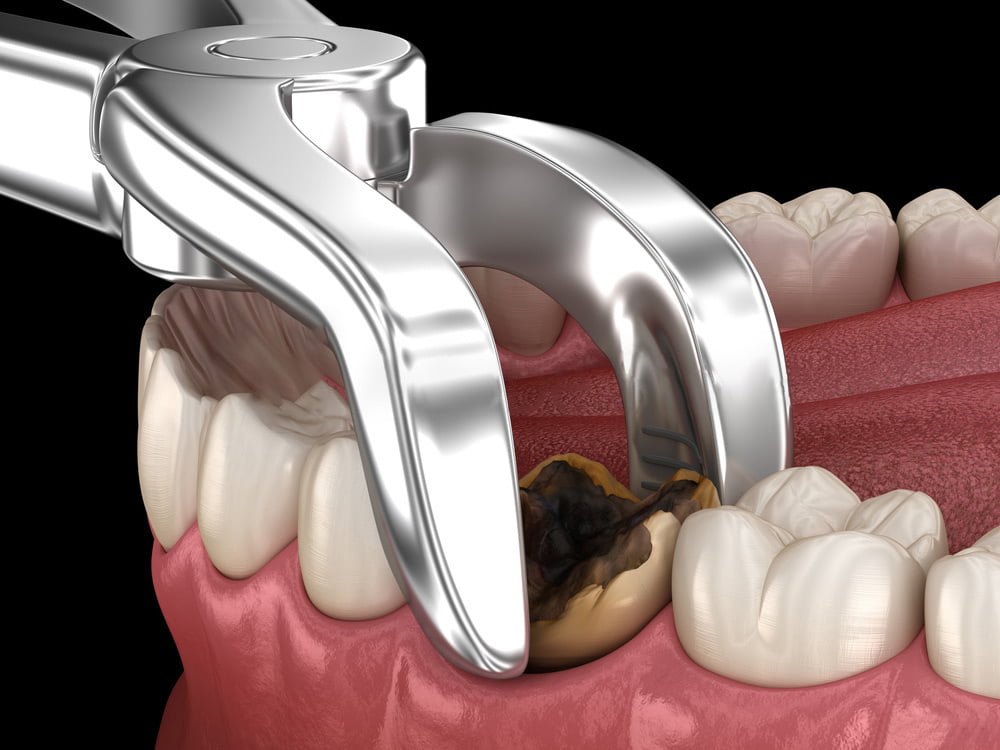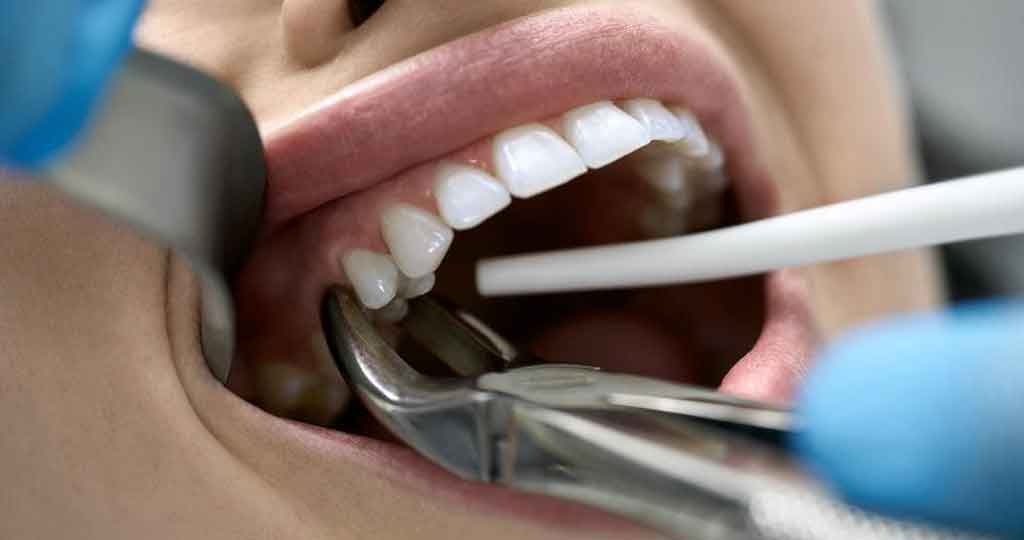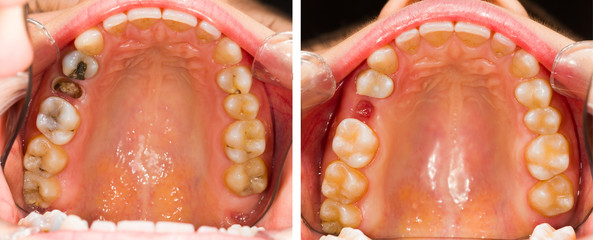
Dental Extraction
What is dental extraction?
The act of taking a tooth out of the mouth is called dental extraction. In order to minimize discomfort for the patient, the treatment is typically carried out under local anesthesia by a dentist or oral surgeon. When fillings, crowns, root canals, or other treatments are not an option for a severely damaged, decaying, or impacted tooth, dental extractions are usually necessary.



Reasons Dental Extraction May Be Required
Dental extractions may be required for a number of reasons:
Severe Tooth Decay: An infection that damages the tooth’s structure can be brought on by dental decay that extends deeply into the tooth. The only option can be extraction if the illness is very widespread.
Gum Disease: Severe gum disease can cause teeth to become loose, necessitating their evacuation to stop further damage.
Wisdom teeth that are not given enough space to erupt normally are known as impacted teeth. This may result in discomfort, infection, or harm to nearby teeth, requiring extraction.
Overcrowding: In order to properly align the remaining teeth, orthodontic treatments like braces may need the extraction of some teeth.
The Dental Extraction Process
There are two types of dental extraction procedures:
simple extraction and surgical extraction. The state of the tooth and where it is in the mouth determine the kind of extraction that is done.
Easy Dental Extractions
Any tooth that is visible in the mouth is extracted simply.
This is the typical course of events:
Anesthesia: To ensure the patient is pain-free throughout the treatment, the dentist will numb the area surrounding the tooth using local anesthesia.
Extracting the Tooth: To extract the tooth from its socket, the dentist employs a tool known as an elevator.
Extracting the Tooth: After the tooth has been sufficiently loosened, it is carefully extracted from its socket using forceps.
Surgical Dental Extraction
For teeth that are difficult to reach, including impacted wisdom teeth, surgical extraction is typically necessary and involves greater complexity. The following steps are included in the procedure:
anesthetic: To keep the patient comfortable, local anesthetic is applied, and occasionally sedation is given as well.
Incision: To reach the tooth, the oral surgeon makes a little incision in the gums.
Bone Removal: To make tooth extraction easier, it may occasionally be necessary to remove the bone surrounding the tooth.
Tooth Removal: To reduce damage to the surrounding tissues, the tooth is then extracted, frequently in parts.
Before and After Dental Extraction
Prior to Dental Extractions
A seamless dental extraction procedure can be ensured with adequate planning. This is what patients ought to do:
Talk About drugs: Let your dentist know about any drugs you take, as some may need to be changed prior to the treatment.
Eat Light: Since you might not be able to have solid food right away after the surgery, eat a light meal a few hours prior.
Make Transportation Arrangements: Having someone drive you home is advised because certain extractions require anesthesia.
After Dental Extraction
In order to promote healing and avoid problems, post-extraction care is essential. Key aftercare advice is provided below:
Control Bleeding: To stop bleeding, gently bite down on a gauze pad that has been placed over the extraction site. Gauze should be changed as needed.
Control Pain: Over-the-counter analgesics can aid in the control of pain. Observe the drug schedule prescribed by your dentist.
Apply Ice: To lessen swelling, place an ice pack on the outside of your cheek for ten to twenty minutes at a time.
Steer Clear of Certain Activities: To prevent the blood clot from moving, refrain from smoking, using a straw, and engaging in intense activities for at least 24 hours.
Aftercare for Dental Extraction
Adequate post-operative care is crucial for a seamless recuperation following dental extractions. Patients should bear the following in mind:
Eating and Drinking Soft Foods: For the first few days, limit your intake to soft foods like soup, mashed potatoes, and yogurt.
Hydration: Sip a lot of liquids, but refrain from using a straw as the suction may cause the blood clot to come loose.
Oral Hygiene: Avoid irritating your teeth by brushing them carefully, especially near the extraction site.
Rinse your mouth with warm salt water to maintain cleanliness after 24 hours.
Keeping an Eye on Recovery
Keep an eye out for infection signs: Get in touch with your dentist right away if you experience any symptoms, such as fever, significant swelling, or pus at the extraction site.
Follow-Up Appointment: To guarantee appropriate recovery, show up for any planned follow-up sessions.




Conclusion for Dental Extraction
Dental extractions are a common procedure, but they are necessary to keep your mouth healthy. No matter what the cause—decay, trauma, or orthodontic issues—if you understand the procedure, rehabilitation, and after-care, a good outcome is certain. In an attempt to reduce patients’ anxiety during tooth extractions, this page aims to debunk common myths and provide succinct answers to frequently asked concerns.
F.A.Q.
Srikanth Dental
Because local anesthesia is used during the surgery, most patients feel very little pain. After the anesthesia wears off, there can be some discomfort, but over-the-counter painkillers can help with that.
Although recovery times vary, most people get well in a week or so. It could take a few weeks for the extraction site to fully recover.
Sure, but proceed with caution near the extraction site. During the first 24 hours, refrain from brushing the area directly.
Steer clear of anything tough, crunchy, or hot that can aggravate the extraction site. During the first few days, only eat soft meals.
